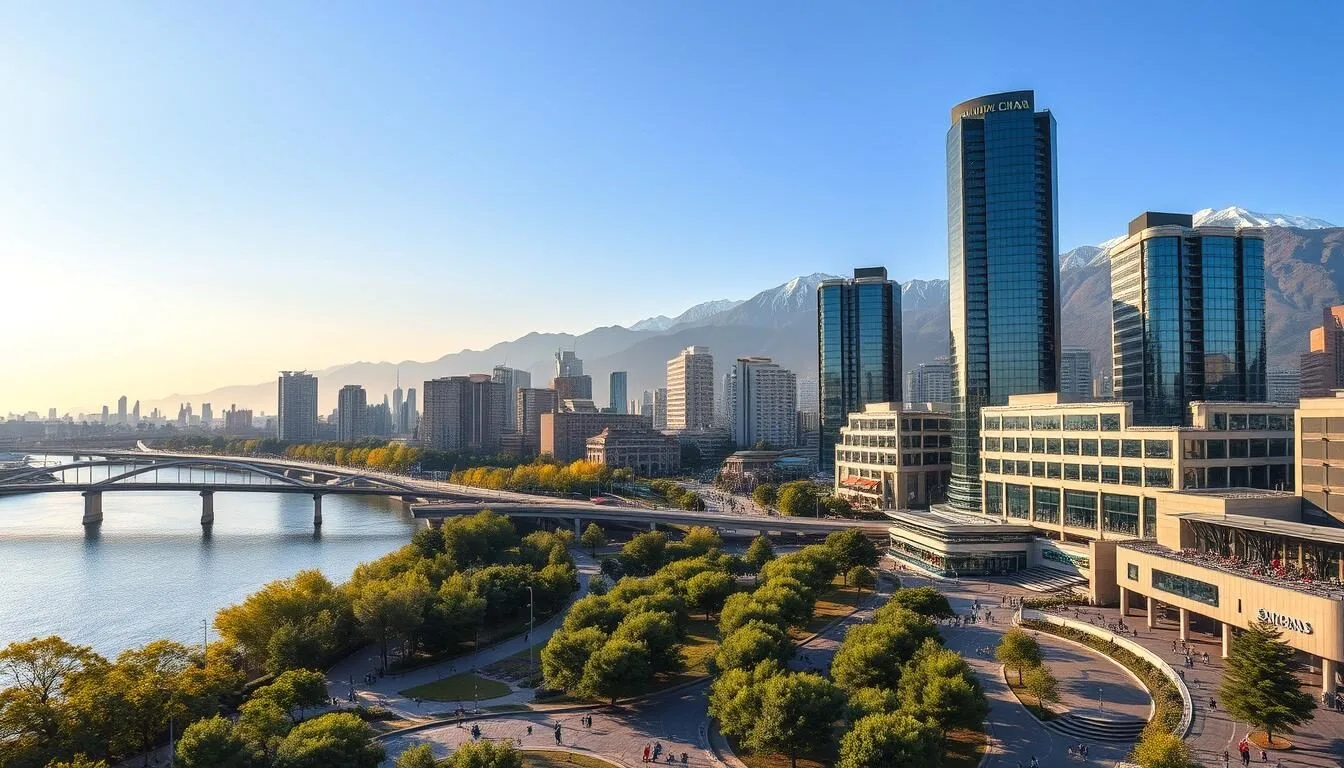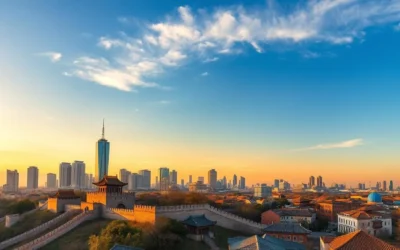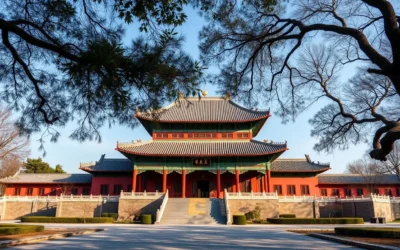✓ Accommodations✓ Flights✓ Rental Cars✓ Tours & Activities
Ningxia, a region in northwest China, is home to a treasure trove of cultural and natural wonders. At its heart lies Yinchuan, the capital city that seamlessly blends Chinese, Mongolian, and Islamic influences.
As you plan your trip to this enchanting city, you’ll find that Yinchuan offers a unique blend of history, culture, and breathtaking landscapes. From ancient imperial tombs to stunning desert vistas, there’s no shortage of exciting things to see and do.
Whether you’re a history buff, a nature lover, or simply looking for a new adventure, this comprehensive guide will help you make the most of your time in Yinchuan, ensuring an unforgettable travel experience.
Discovering Yinchuan: China’s Hidden Desert Gem
Yinchuan, a desert gem in northwest China, offers travelers a fascinating mix of history, culture, and natural beauty. As you explore this captivating city, you’ll uncover the rich tapestry of its past and the vibrant cultural heritage that defines it today.
A Brief History of Yinchuan
Yinchuan’s history dates back over a thousand years, with its former name Xingzhou being the capital of the Western Xia Empire. In 1227, the city was conquered by Genghis Khan’s Mongol forces, marking a tragic event in its history. Despite this, the city has flourished, now boasting a population of around 2 million people. The legacy of its past is still visible in its architecture and cultural practices.
At that time, the city’s name was synonymous with the Western Xia Empire, a testament to its historical significance. Today, visitors can still experience the remnants of this era, making Yinchuan a unique destination for history enthusiasts.
| Historical Era | Significant Events | Legacy |
|---|---|---|
| Western Xia Empire | Capital city under the name Xingzhou | Architectural styles, cultural practices |
| Mongol Conquest (1227) | Genghis Khan’s forces conquered the city | Historical records, cultural influences |
| Modern Era | Flourishing city with 2 million residents | Blend of Chinese, Mongolian, and Islamic cultures |
Why Visit Yinchuan
Located in the Ningxia Hui Autonomous Region, Yinchuan is nestled between the Yellow River and the Helan Mountains, creating a unique desert environment. This distinctive landscape, combined with its rich history, makes Yinchuan an attractive destination for travelers. The city offers a fascinating blend of cultures, with influences from Han Chinese traditions, Islamic heritage, and Mongolian culture.
As you explore Yinchuan, you’ll find that it serves as an excellent base for discovering the surrounding region. With easy access to desert landscapes, mountain scenery, and historical sites, visitors can experience the diverse attractions that this often-overlooked part of China has to offer.
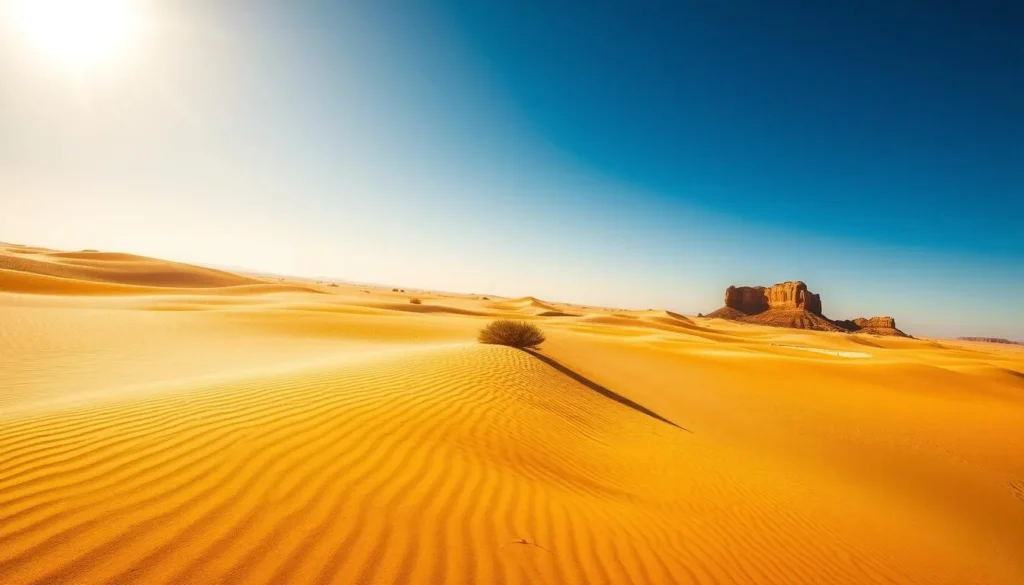
Western Xia Imperial Tombs: China’s Mysterious Pyramids
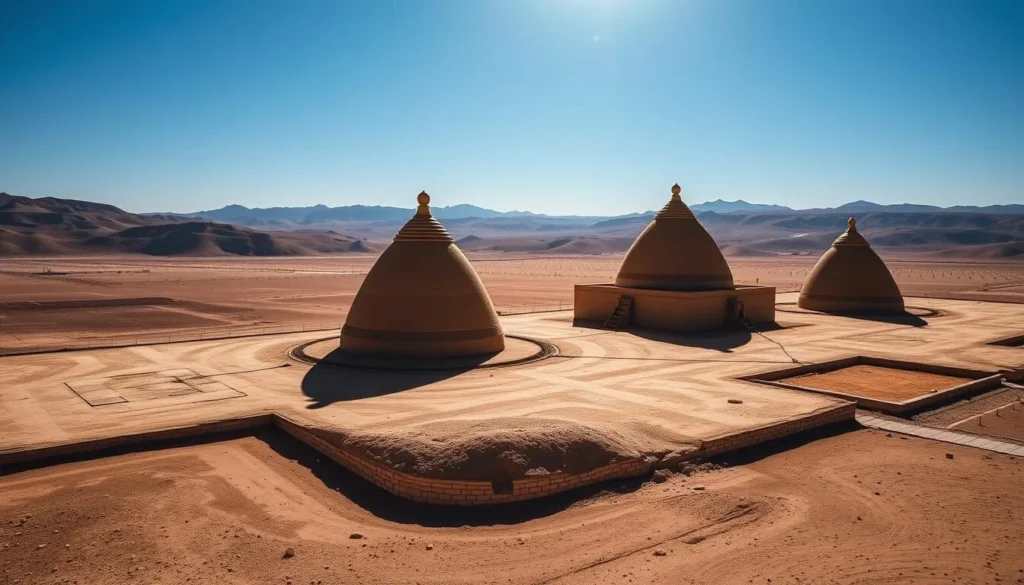
Located about 25km from downtown Yinchuan, the Western Xia Imperial Tombs are a fascinating historical site that showcases the region’s rich cultural heritage. The tombs are part of the largest surviving imperial tombs park in China and the largest Western Xia relic site.
The History of Western Xia Dynasty
The Western Xia Dynasty, also known as the Tangut Empire, was a powerful kingdom established by the Tangut people in the 11th century. It controlled much of northwestern China for nearly two centuries before falling to Mongol forces in the 13th century. The dynasty’s history is marked by its unique blend of Han, Buddhist, and Dangxiang cultures, which is reflected in the architecture and artifacts found at the tombs.
The Western Xia Dynasty was known for its sophisticated culture and trade networks, which stretched across China and Central Asia. The dynasty’s capital, Xingqing, was an important center of politics, economy, and culture, and its legacy continues to be felt in the region today.
Exploring the Tombs and Museum
As you explore the Western Xia Imperial Tombs, you’ll discover a collection of nine imperial tombs and over 250 subordinate tombs. While only three tombs – Yu Tomb, Jia Tomb, and Tai Tomb – are open to the public, they offer a glimpse into the lives of the Tangut emperors and the history of the Western Xia Dynasty.
The on-site Western Xia Museum houses an impressive collection of artifacts, including pottery, jade, and bronze items, which provide valuable context about the dynasty’s history, culture, and eventual downfall. The museum is a must-visit attraction for anyone interested in history, archaeology, and culture.
Practical Tips for Visiting
When planning your visit to the Western Xia Imperial Tombs, be sure to allocate at least 2-3 hours to explore the tombs and museum. The entry fee is 88 yuan (approximately $13), and it’s recommended to arrive early in the morning to avoid crowds and desert heat.
To make the most of your visit, consider hiring a guide or using a guided tour service, which can provide valuable insights into the history and significance of the tombs.
Helan Mountain Rock Art: Ancient Desert Gallery
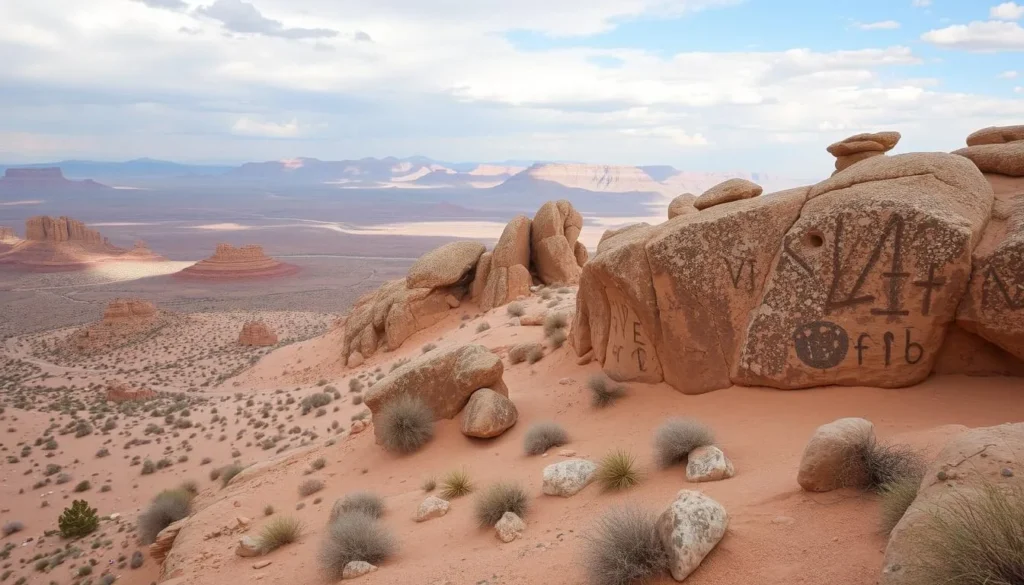
The Helan Mountain Rock Art site is a remarkable collection of ancient rock art that dates back an astonishing 10,000 years. This ancient desert gallery is home to over 6,000 rock carvings and paintings, providing a unique glimpse into the lives of China’s early northern nomadic tribes.
The Significance of the 10,000-Year-Old Petroglyphs
The Helan Mountain Rock Art represents one of China’s most significant collections of ancient petroglyphs. These remarkable rock art pieces provide a fascinating glimpse into the lives of ancient nomadic tribes who inhabited the region, depicting hunting scenes, religious rituals, animals, and mysterious masked figures. The most famous petroglyph at the site is the Sun God, which is one of the oldest and best-preserved rock carvings in the entire collection.
What to See at the Rock Art Site
As you explore the Helan Mountain Rock Art site, you’ll discover numerous pictographs depicting animals, faces, hunting scenes, and some Western Xia characters in real life. The site offers a unique window into early civilizations, and the stunning natural scenery of Helan Mountain forms a natural barrier against the desert winds.
Visiting Information
Entry to the Helan Mountains Rock Art Park costs 70 yuan (approximately $10). It’s advisable to visit in the morning when temperatures are cooler, especially during summer months. The excellent World Rock Art Museum within the scenic area provides context for the petroglyphs and displays comparative rock art from around the world.
Shuidong Cave: Archaeological Wonders and Desert Landscapes
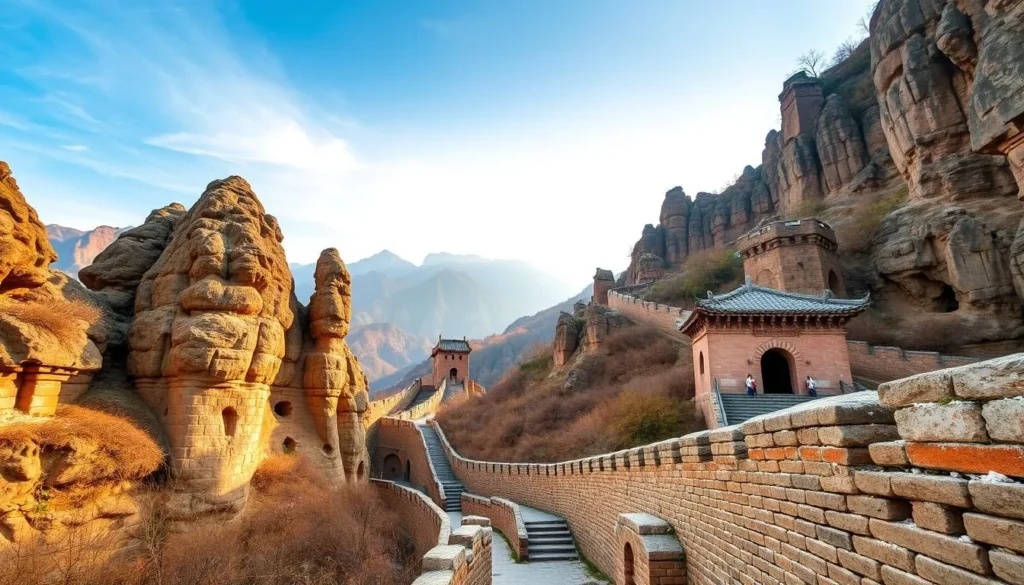
As the earliest archaeological site of the Paleolithic Age, Shuidong Cave is a treasure trove of historical and cultural significance. This remarkable site has earned several titles, including the “Cradle of Prehistoric Archaeology” and the “Witness of the communication between the East and the West.”
The Historical Significance
The archaeological area of Shuidong Cave is a highlight, recording the living and multiplying of human beings like a gallery. It features a remarkable section of the Ming Dynasty Great Wall, complete with watchtowers and defensive structures that are among the best-preserved military installations in China.
Unique Attractions Within the Site
Within the Shuidong Cave Scenic Area, you’ll find numerous attractions, including Cangbing Cave with its elaborate network of underground tunnels, the Shuidong Cave Ruins Museum, and stunning Yardang landforms created by wind erosion. Visitors can experience various unique transportation methods between different sections of the park, such as camel rides and horse-drawn carriages.
Tips for Getting the Most Out of Your Visit
The full experience at Shuidong Cave costs around 240 yuan and typically requires 3-4 hours to explore properly. For the best experience, visit during the cooler months between May and October when the weather is most pleasant for outdoor exploration.
Ningxia Museum: Journey Through Regional History
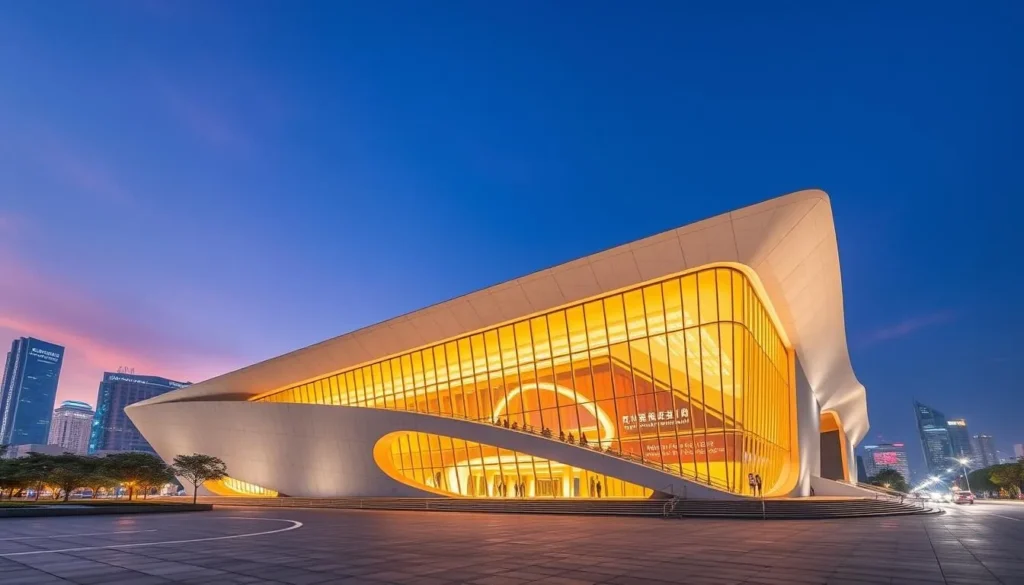
Located in the heart of Yinchuan, the Ningxia Museum is a treasure trove of regional history and culture. As a comprehensive museum, it boasts an impressive collection of artifacts that narrate the story of Ningxia’s past, its cultural heritage, and the significance of the Western Xia dynasty.
Highlights of the Collection
The Ningxia Museum houses over 51,000 cultural relics across four main exhibition halls, featuring metals, porcelains, calligraphy, paintings, and ancient coins. One of the museum’s highlights is its comprehensive collection of Western Xia artifacts, providing visitors with a deeper understanding of this powerful but often overlooked dynasty. The museum also cherishes several valuable Qurans, reflecting the region’s Islamic influence.
Visitor Information
The Ningxia Museum is open from 9:00 AM to 5:00 PM, closed on Mondays. It offers free admission, making it an accessible destination for all. Visitors can explore the museum thoroughly in about 1-3 hours. Most exhibits feature explanations in both Mandarin and English, and free audio guides are available with a deposit of identification.
Yinchuan, China: Best Things to Do – Top Picks for Wine Lovers
The Ningxia region, where Yinchuan is located, has emerged as one of China’s premier wine-producing areas, making it a must-visit destination for wine lovers. As you explore Yinchuan, you’ll discover a unique blend of culture and viticulture that sets it apart from other destinations.
Chateau Changyu Moser XV: Desert Winemaking
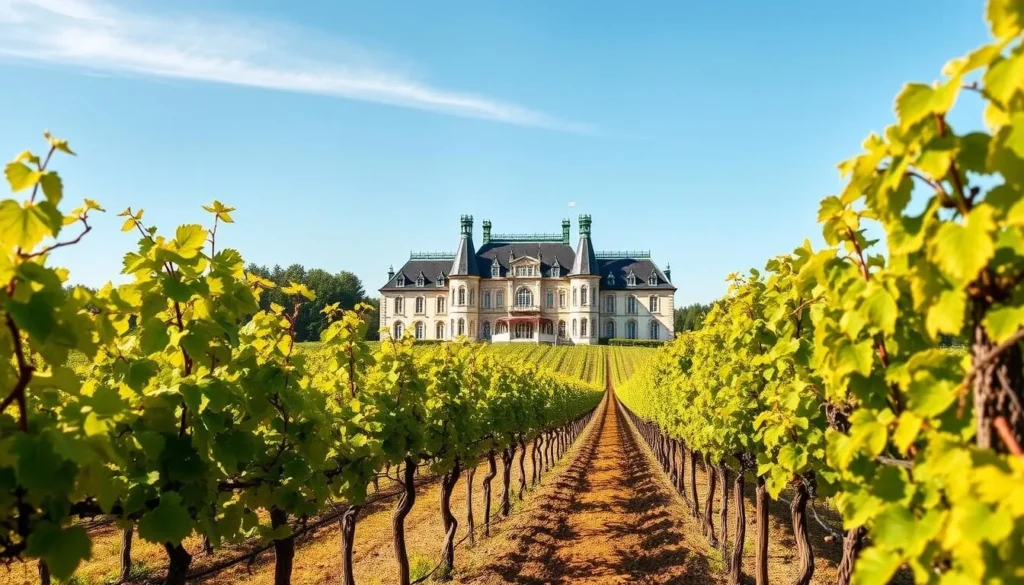
Chateau Changyu Moser XV is a standout winery in Yinchuan, offering a comprehensive wine experience that includes vineyard tours and tastings. This high-end winery is equipped with beautifully landscaped grounds, featuring sculptures and fountains, creating a picturesque environment. The winery’s second floor houses a wine museum, while the third floor contains educational facilities where visitors can learn about viticulture.
Other Notable Wineries in the Region
Beyond Chateau Changyu Moser XV, Yinchuan is home to other exceptional wineries worth visiting. Silver Heights, Helan Qingxue, and Kanaan Winery are just a few examples of the region’s diverse wine production. Each winery offers a unique experience, showcasing the characteristics of Ningxia’s wine industry. Visitors can easily spend a day exploring these wineries, enjoying the scenic desert landscapes and learning about the local viticulture practices.
Whether you’re a seasoned oenophile or just looking to try something new, Yinchuan’s wineries are a great place to explore. With its unique terroir and ideal climate conditions, the Ningxia region is producing some of China’s best wines, making a visit to this area a must for any wine enthusiast.
Cultural Landmarks: Pagodas and Historic Sites
As you explore Yinchuan, you’ll discover a plethora of cultural landmarks that showcase the city’s rich history. The city is dotted with historic pagodas, temples, and other significant structures that are a testament to its cultural heritage.
Haibao Pagoda: The North Pagoda
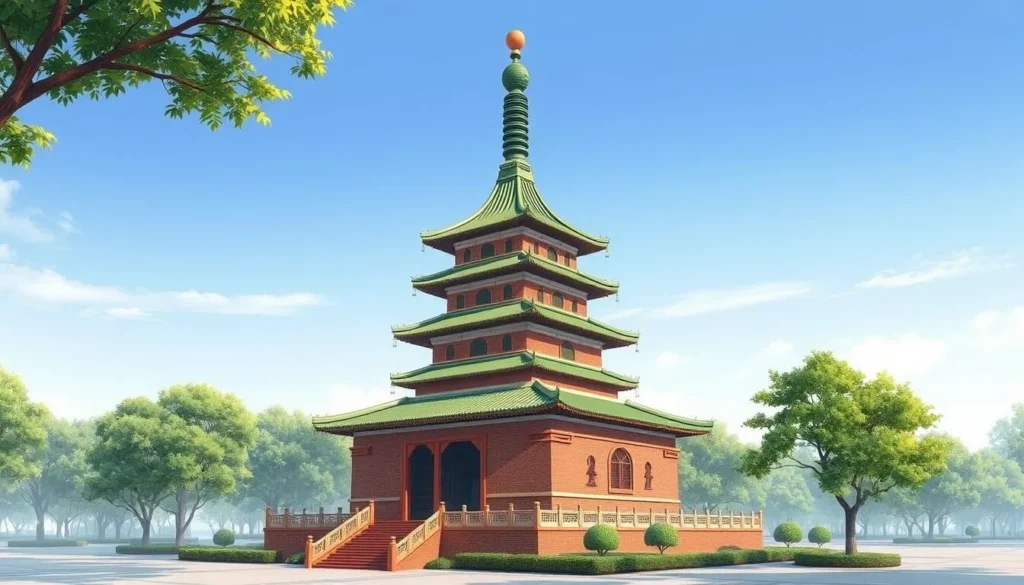
The Haibao Pagoda, also known as the North Pagoda, is one of Yinchuan’s oldest Buddhist temples, boasting a history of over 1,500 years. This distinctive square-shaped 9-story brick structure is topped with a peach-shaped green glazed spire, creating a striking visual contrast.
Chengtian Temple Pagoda: Panoramic City Views
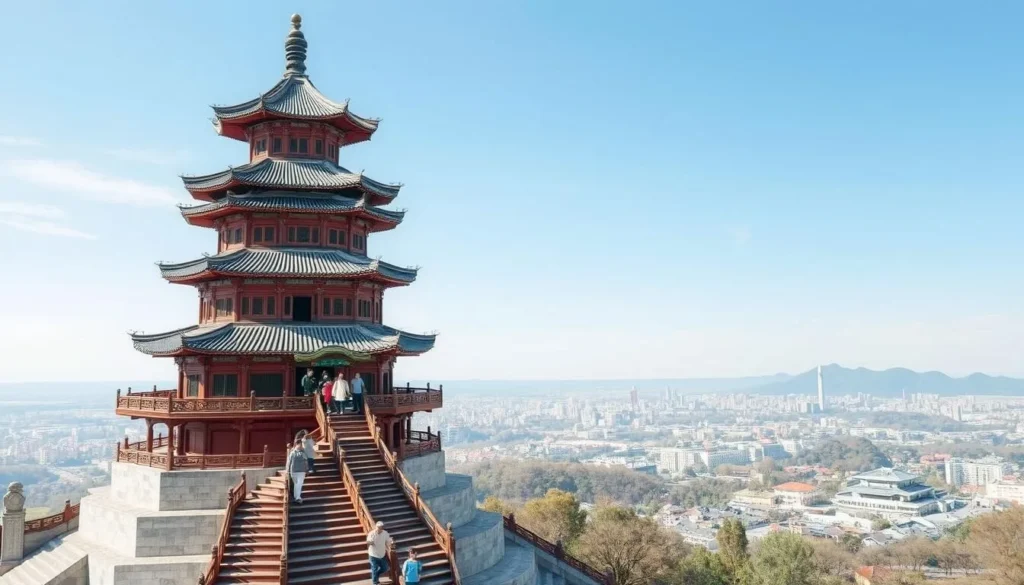
The Chengtian Temple Pagoda offers visitors the opportunity to climb to the top via steep wooden stairs for panoramic views of Yinchuan city. The entry fee of 20 yuan includes access to both the ground level and the tower.
Drum Tower and Other Historic Structures
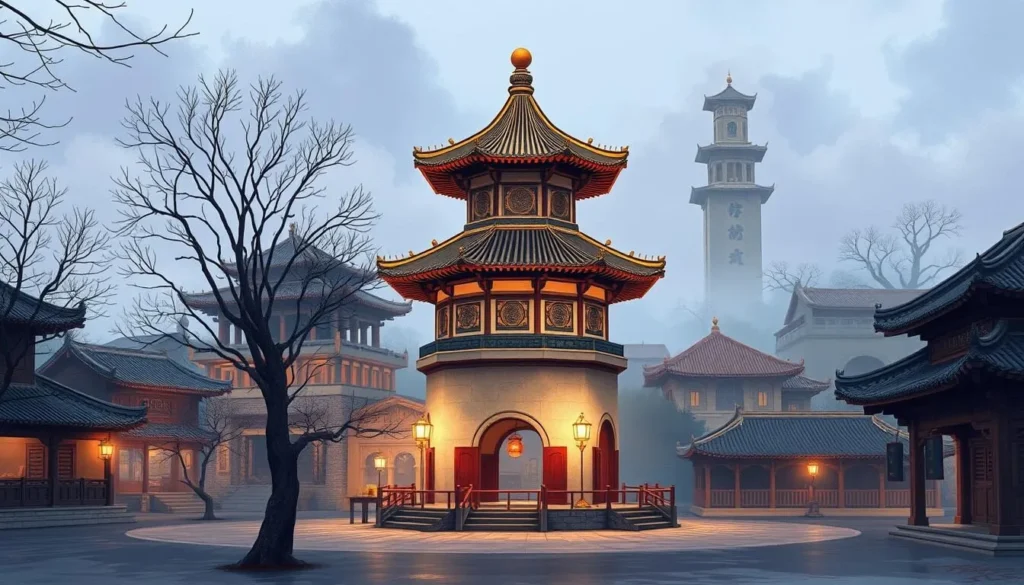
Yinchuan’s historic Drum Tower, located in the older part of the city, dates back to the Qing Dynasty and serves as a central landmark. While interior access is limited, the tower’s exterior is worth admiring. Other notable historic structures include the Jade Emperor Pavilion, Nanguan Mosque, and Yuhuang Pavilion, reflecting the city’s diverse cultural influences.
Most of these cultural landmarks can be visited year-round and are particularly pleasant in the early morning or late afternoon when temperatures are milder and lighting is ideal for photography. As you explore these sites, you’ll gain a deeper understanding of Yinchuan’s rich cultural heritage and the significance of its historic pagodas and landmarks.
Modern Attractions: Contemporary Art and Entertainment
As you explore Yinchuan, you’ll discover a city that seamlessly blends traditional heritage with modern attractions. The city’s contemporary art scene is a testament to its evolution into a forward-thinking cultural hub.
Yinchuan Museum of Contemporary Art (MOCA)
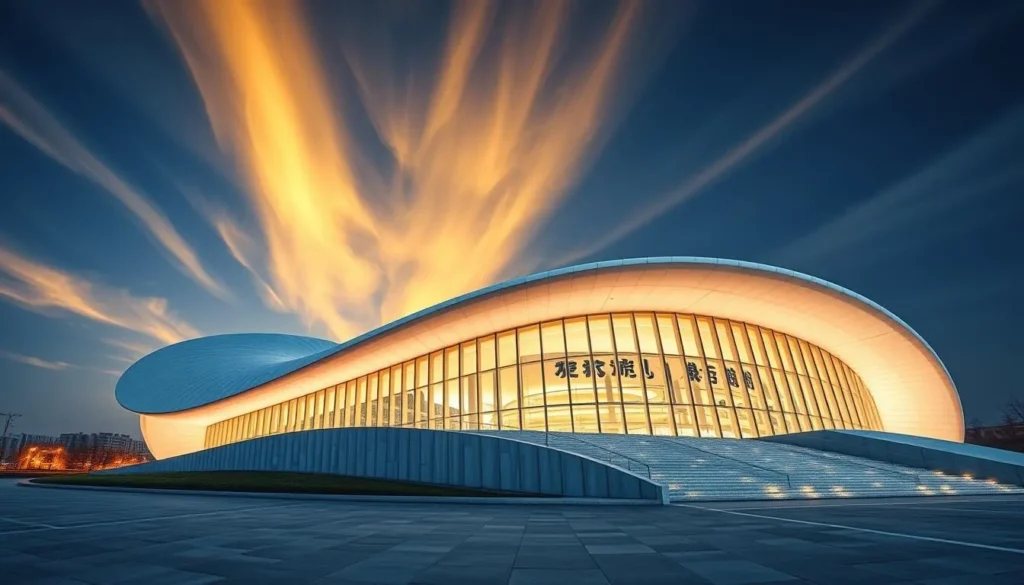
The Yinchuan Museum of Contemporary Art (MOCA) is a masterpiece of modern architecture, completed in 2015 on the banks of the Yellow River. With a curvilinear design that echoes the flowing river and surrounding desert landscape, MOCA is not just a museum but a work of art itself. As one of China’s most innovative art museums, it showcases cutting-edge contemporary Chinese art alongside international exhibitions, offering a fascinating contrast to the city’s ancient cultural sites. You can explore the diverse exhibitions for a mere ¥20 entry fee.
Ningxia Grand Theater: Cultural Performances
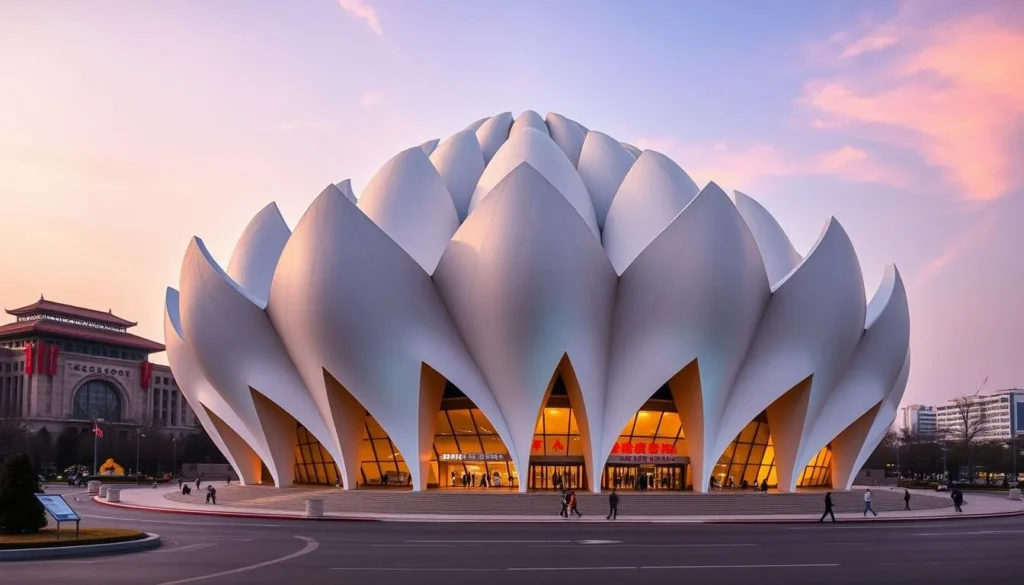
Located in the heart of People’s Square, beside the Ningxia Museum, the Ningxia Grand Theater is Yinchuan’s premier performing arts venue. Its unique lotus-shaped design makes it a landmark in the city. The theater hosts a variety of performances, ranging from traditional Chinese opera to modern dance and international music concerts, reflecting the city’s commitment to cultural development. You can check the theater’s website for current and upcoming productions, offering a rich cultural experience during your visit to Yinchuan.
These modern cultural institutions highlight Yinchuan’s growth into a city that values both its heritage and contemporary artistic expression, making it a compelling destination for travelers interested in culture, art, and entertainment.
China-Arab Axis and Exotic Architecture
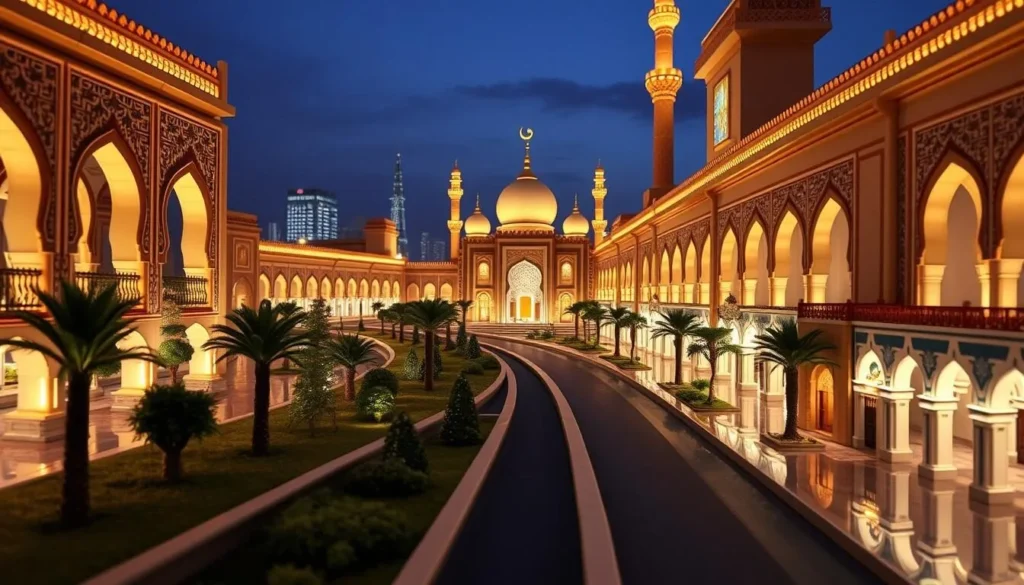
Yinchuan’s China-Arab Axis Landscape Avenue is a testament to the city’s role as a bridge between China and the Arab world. This monumental 2,100-meter-long and 58-meter-wide boulevard was built to commemorate the permanent establishment of the China-Arab Economic and Travel Forum in Yinchuan.
Day and Night Views
The avenue is a treat to visit both during the day and at night. Walking along the road, you’ll experience a fascinating architectural fusion where one side displays traditional Chinese elements like Chinese knots and courtyard designs, while the other showcases Arabic features such as pyramid statues and onion domes. At night, the avenue is particularly spectacular when illuminated by carefully designed lighting that highlights the architectural details and creates a magical atmosphere.
Cultural Significance
The China-Arab Axis represents Yinchuan’s unique position as a bridge between China and Arab nations, symbolizing the growing economic and cultural ties between them. This attraction is completely free to visit and accessible 24 hours a day, making it an ideal way to spend an evening after exploring other sites in the city.
Natural Escapes: Parks and Mountain Retreats
Yinchuan’s natural escapes await, featuring breathtaking mountain parks and tranquil urban oases. The city offers a unique blend of outdoor adventures and relaxing getaways, making it an ideal destination for nature lovers and families alike.
Suyukou Forest Park: Mountain Adventures
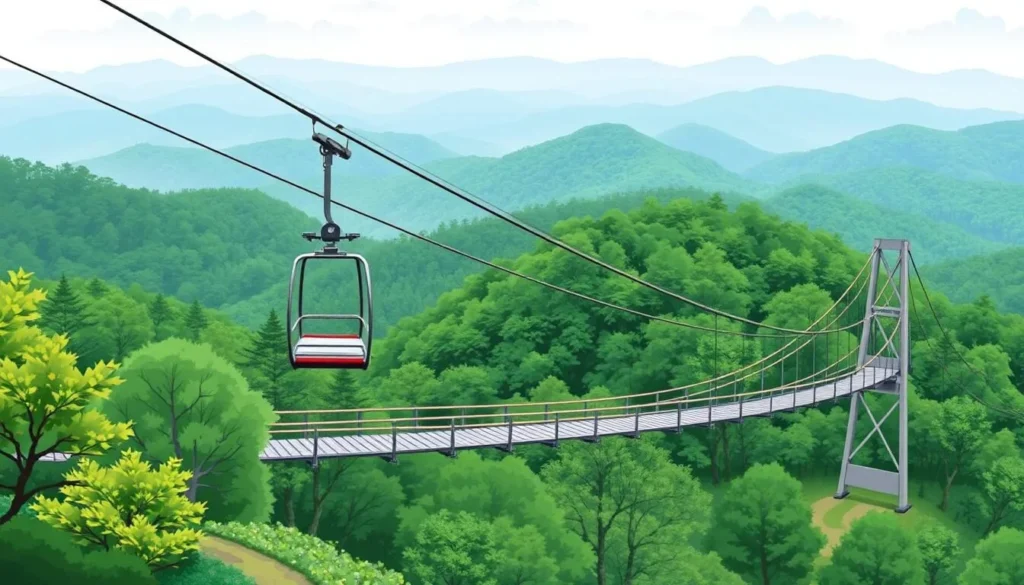
Suyukou Forest Park, located in the Helan Mountains, is a must-visit for those seeking mountain adventures. Take a chairlift ride to the top for panoramic views of the valley, and then walk across the 248-meter-long suspension bridge for an exhilarating experience. You can hike down the mountain trails, enjoying the natural scenery and getting some exercise.
The park features a huge lake, beautifully landscaped gardens, paved paths, and family-friendly attractions. It’s a great place to spend a day, with plenty of shade during the summer months. Visitors can also rent boats and enjoy a leisurely paddle on the lake.
Yuehai Park: Urban Oasis
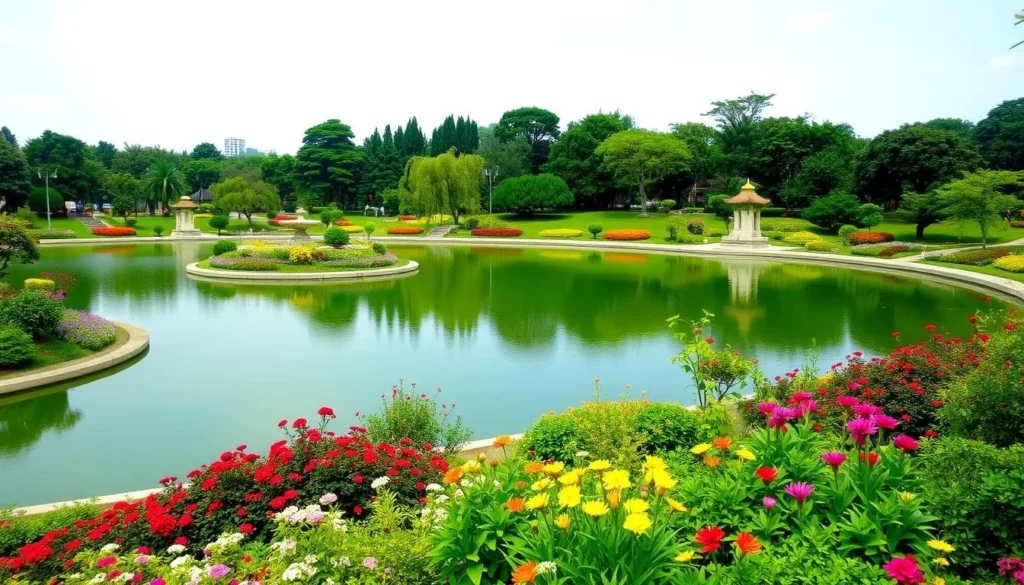
Yuehai Park serves as Yinchuan’s premier urban green space, offering a peaceful escape from the city bustle. The park is centered around a large lake where you can rent paddle boats and enjoy the scenery. It’s also a great spot for families, with beautifully landscaped gardens, pavilions, and bridges.
In the evening, Yuehai Park comes alive with local cultural activities, including group dancing and impressive laser light shows over the lake. It’s a wonderful way to experience contemporary Chinese leisure life and enjoy quality time with family or friends.
Culinary Experiences and Night Markets
When night falls, the city comes alive with vibrant night markets, serving up a diverse range of Ningxia specialties. These markets offer a unique opportunity to experience the local culture and cuisine.
Huaiyuan Night Market: Food Paradise
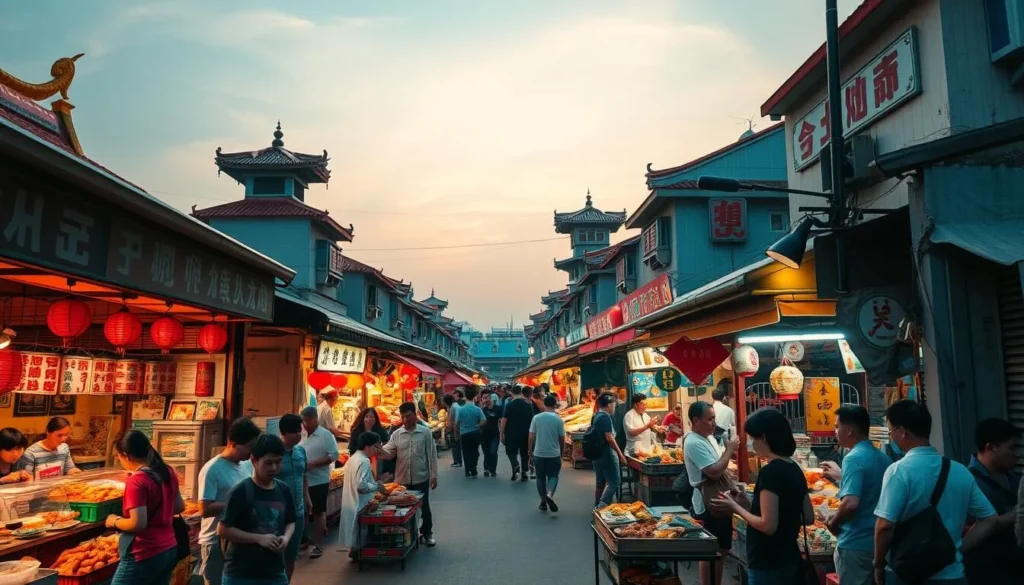
Huaiyuan Night Market is a must-visit destination for food enthusiasts. Located at the intersection of Huaiyuan Road and Wencui North Road, this bustling market features countless food stalls selling delicious Ningxia specialties at affordable prices. The market comes alive between 7-10 PM, offering a lively atmosphere where you can mingle with locals and sample a variety of dishes.
The market is known for its authentic local cuisine, including Jiangshui Noodles, Cake Sandwiched with Mutton, and Fried Glutinous Rice Cake. With its rich flavors and lively ambiance, Huaiyuan Night Market is an excellent place to experience the local food culture.
Must-Try Ningxia Specialties
Ningxia cuisine is a reflection of the region’s cultural heritage, with dishes influenced by its Muslim traditions. Some must-try specialties include Grid-like Deep-fried Dough Twists, Buckwheat Lump in Bowl, and Jiaozi Dumplings Stuffed with Minced Mutton. These dishes offer a unique flavor profile that is both delicious and authentic.
When visiting Huaiyuan Night Market, be sure to come with an empty stomach to sample as many different dishes as possible. The market offers a wide range of options to suit every palate, making it an ideal place to explore the local cuisine.
Practical Travel Information for Yinchuan
To ensure a smooth and enjoyable journey, here’s some practical travel information for Yinchuan. Whether you’re planning to explore the city’s rich history, visit ancient tombs, or simply enjoy the local cuisine, being prepared is key.
Best Time to Visit
The best time to visit Yinchuan is from May to October when the weather is most pleasant, with warm days and cool nights ideal for outdoor exploration. Avoid visiting during winter (November to February) when temperatures can drop below freezing, or early spring (March and April) when the region experiences strong winds and occasional sandstorms.
Getting Around the City
Getting to Yinchuan is convenient with direct flights from major Chinese cities. Within Yinchuan city, transportation options include taxis with a base fare of ¥7, public buses covering over 20 routes, and special tourist buses operating between April and October to major attractions outside the city center.
| Transportation | Description | Cost/Fare |
|---|---|---|
| Taxis | Available throughout the city | ¥7 base fare |
| Public Buses | Over 20 routes covering major areas | Varies by distance |
| Tourist Buses | Operate between April and October | Varies by route |
Accommodation Options
Accommodation in Yinchuan ranges from luxury options like the Kempinski Hotel and Yinchuan International Convention Centre Hotel to mid-range choices such as the Yinchuan Vintage Hill Hotel and budget-friendly Jinjiang Inn. Booking in advance is recommended, especially during peak travel seasons.
Sample 3-Day Itinerary
A sample 3-day itinerary might include: Day 1 – exploring city landmarks like Haibao Pagoda, Drum Tower, and the Ningxia Museum; Day 2 – visiting the Western Xia Imperial Tombs and Helan Mountain Rock Art; Day 3 – experiencing Shuidong Cave and a winery tour. This itinerary provides a balanced mix of culture, history, and natural beauty.
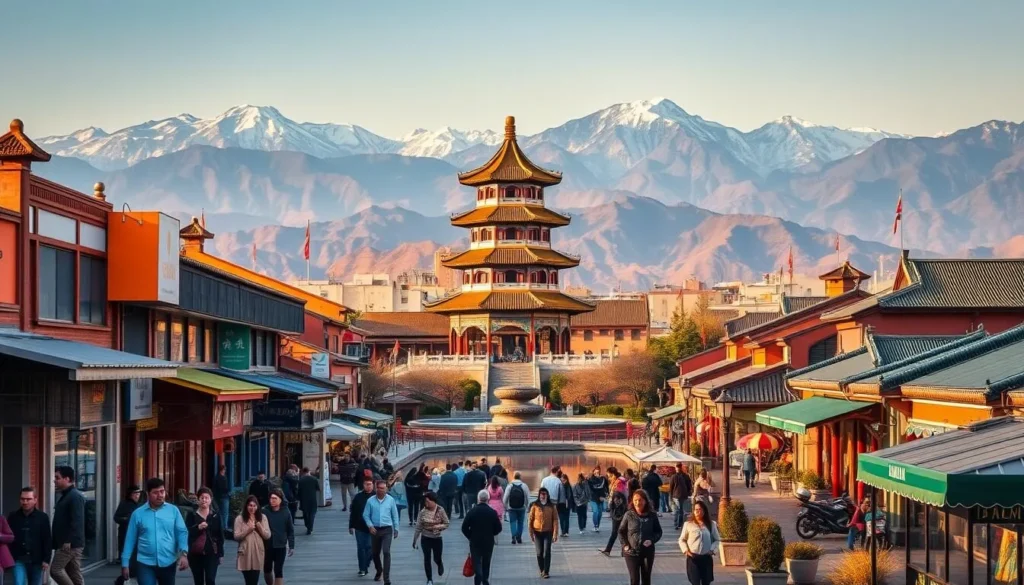
Conclusion: Why Yinchuan Deserves a Spot on Your China Itinerary
Discover the charm of Yinchuan, a city that seamlessly blends traditional Chinese heritage with modern attractions. As you explore this desert gem, you’ll uncover a wealth of historical sites, cultural landmarks, and natural wonders that make it an ideal destination for travelers.
Yinchuan city offers a refreshingly authentic Chinese travel experience, away from the typical tourist routes. The Western Xia Imperial Tombs, a standout attraction, is a must-visit, while Shui Dong Gou offers an adventurous alternative. With its unique blend of cultures, Yinchuan creates a distinctive atmosphere where you can explore Islamic influences, ancient Chinese heritage, and even experience desert winemaking.
The city’s attractions remain relatively uncrowded throughout the year, allowing for a more relaxed and immersive experience. From the Ming Great Wall section at Shuidong Cave to the contemporary art at MOCA, there’s something for every type of traveler. Yinchuan’s position near the Yellow River and the edge of the desert creates scenic landscapes that differ dramatically from eastern China.
With direct flights from major Chinese cities and a compact layout, Yinchuan makes for an ideal addition to a broader China itinerary or a fascinating standalone destination. Whether you’re a history buff, food enthusiast, nature lover, or cultural explorer, Yinchuan’s diverse attractions ensure that you’ll find something to treasure in this underrated desert gem.
In conclusion, Yinchuan is a hidden gem that deserves a spot on your China itinerary. With its rich history, cultural landmarks, and natural beauty, this city is sure to leave a lasting impression on your travels.
The above is subject to change.
Check back often to TRAVEL.COM for the latest travel tips and deals.
